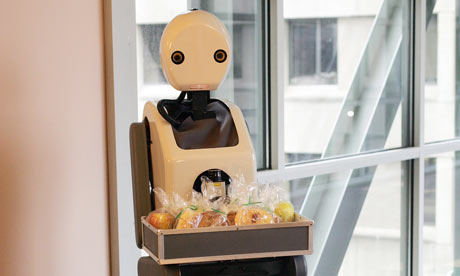Photo Credit: Nic McPhee http://flickr.com/photos/nicmcphee/
The question of how to help American students succeed in high tech subjects continues to be on the forefront of public discussion nationwide. One of the answers is occurring on a regular basis in communities across the country. Robotics intrigues students in a way that only a few topics can. In a recent era, space exploration held this fascination for young people and inspired a generation to take on science and engineering. Now, it appears robotics is at center stage for many students. The photo above is from a robotics competition held at the University of North Dakota. In this contest, the robots are programmed to act as sumo wrestlers. The robots push each other until one is shoved out of the ring.
Robotics classes are becoming more common in schools and robotics competitions are sweeping the nation. There are many types of competitions with acronyms such as FIRST or BEST. Take the following article in the San Antonio Express News about the local BEST competition. Students spent six weeks building robots to undertake a complex task centered around the theme of Bugs! Forrest Mims III, an amateur scientist who writes a column in the San Antonio Express News, states that robotics may be the key to improving education, especially in science and technology. You can read the full article at the link below.
The educational performance of US students has fallen dramatically in recent decades. Parents and educators can help reverse the tide by involving their students in robotics and science fairs. See www.sabest.org for details about BEST. …
Robots help teens learn about science
San Antonio Express
Sat, 29 Oct 2011 00:29:04 GMT





Recent Comments